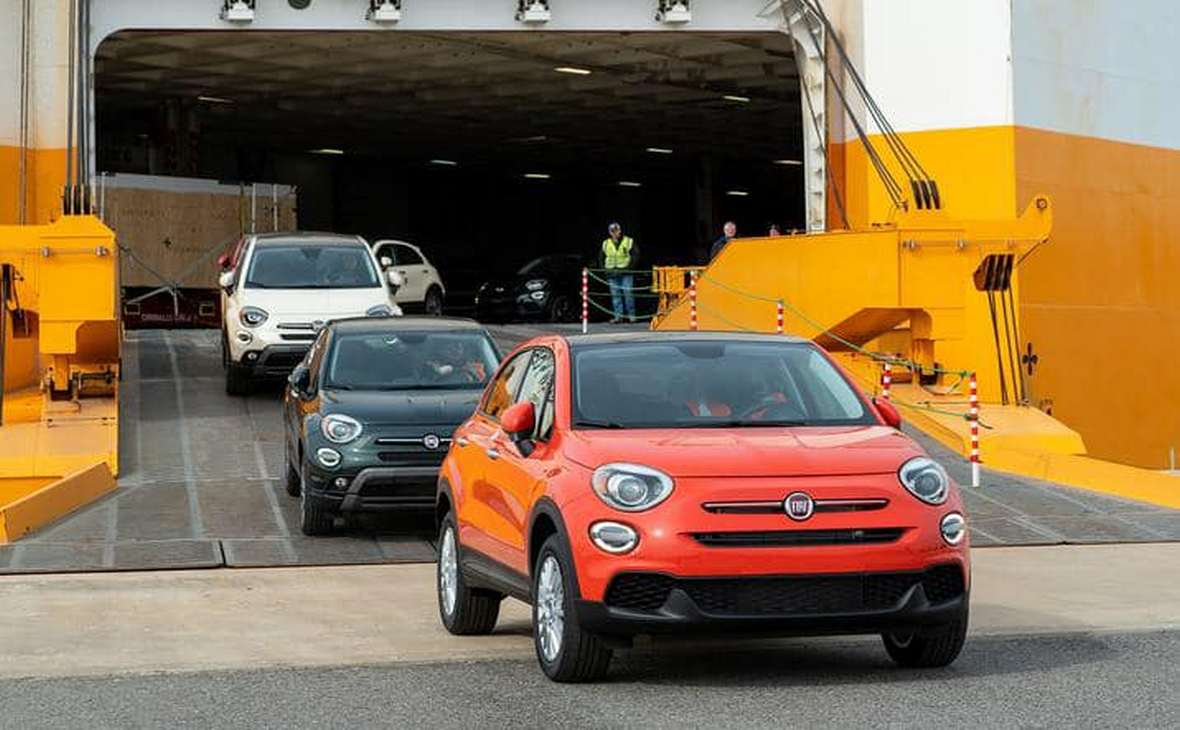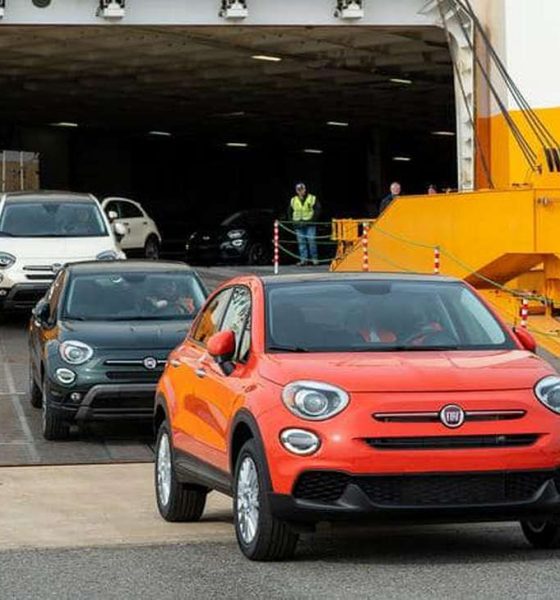

News
Tesla gives Fiat a wake up call: ‘fake’ electric cars can still manipulate EU emissions standards
New CO2 regulations set to take effect in Europe have several loopholes in place that could derail the goal of reducing new car emissions by 37.5% in the region by 2030, according to a study published by advocacy group Transport & Environment. In a worst-case modeling scenario, gaming of the rules could also result in almost two million fewer zero or low emissions vehicles coming to market between 2025 and 2030, and of those in the market, half might be plug-in hybrids built for compliance, not innovation.
In order to propel the creation of a battery electric auto industry in the region, European Union members and parties participating in the discussions over the new CO2 regulations included incentives in the agreement that were tied to specific vehicle sales. Auto manufacturers with 15% of their sales coming from zero and low emission vehicles by 2025 and 35% from 2030 onwards will have their CO2 targets reduced by a maximum of 5%. This effectively means a company’s new fleet-wide CO2 output would only need to be reduced to 34.4% by 2030 instead of 37.5%, as calculated in the study.
Companies have further been allowed to pool their fleets together to help reach these goals, something which Tesla has recently taken advantage of by partnering with Fiat Chrysler. As a manufacturer of zero-emission vehicles, counting Tesla’s fleet with Fiat’s lowers the average per-vehicle CO2 output, thus lessening the burden for Fiat to meet the emissions standards while Tesla profits from the deal.

On its face, the 5% trade-off for lower emissions standards would be the entry of new, more innovative clean energy vehicles on the market; however, the inclusion of plug-in hybrids in that calculation could be problematic and used to game the system. In order to qualify as a low emissions vehicle, a hybrid car only needs to be under a threshold of 50 g/km CO2 output during testing which assumes full use of the vehicle’s battery. Because most of these plug-in hybrids have very low battery ranges, they’re often not used in practice in favor of the internal combustion engine, thus increasing their real-world CO2 output to around 120 g/km.
The technology behind plug-in hybrids is less innovative and therefore cheaper to produce, so the financial appeal of producing more of these types of vehicles over battery-only electric vehicles is high. The Transport & Environment study estimates that this effect will lead to about 2 million fewer all-electric cars being produced in favor of the cheaper, ‘fake’ electric compliance hybrids.
Other loopholes in the EU regulations also contribute to a reduction in CO2 outcomes. Fourteen countries where non-existent or nascent low emissions vehicle markets were identified will receive nearly double the emissions credit for eco-friendly cars sold to encourage development in the regions.


Simply, a large manufacturer could register thousands of vehicles in one of these markets, acquire double credit for each vehicle, and then quickly sell the vehicles in an established market where demand is higher. When sold, the cars would technically be “used” for record keeping purposes, but new to consumers and presented that way. This would circumvent the point of developing a low emissions market in those countries, further limiting the expansion of low emissions car availability.
The EU member states where double credits apply are Ireland, Greece, Poland, Slovenia, Croatia, the Czech Republic, Slovakia, Bulgaria, Romania, Estonia, Latvia, Lithuania, Cyprus, and Malta.
The final (possible) loophole identified in the Transport & Environment study lies with the inclusion of Norway in the EU regional calculations. The country has not yet formally been included in the 2025/30 standards but is part of the 2020/1 standards currently in effect and will likely be included in the upcoming rules.
Norway is requiring 100% of its vehicles to have zero emissions by 2025, thus guaranteeing sales of those types of cars in a market where ICE vehicles are not competitive. Automakers could concentrate their sales in that region and make less effort to sell in the rest of Europe, all while still remaining compliant with the regulations. Reaching compliance in this manner is another way the intent of the coming CO2 reduction requirements can be manipulated.

The authors of the Transport & Environment study have laid out their proposals to overcome these loopholes, but considering that they were included to win the support of the auto industry in the region, further changes to the regulations seem unlikely. Also, the study could be taking an overly pessimistic view of the possible outcomes the loopholes could lead to.
Consumer markets, even without significant CO2-related regulation, are already showing trends towards increasing low emission vehicle demands, especially for battery electric vehicles like those sold by Tesla. This “Tesla Effect” has been noted by the upper echelons of legacy auto and several have committed to billions in electric fleet investments. Porsche is unveiling its first production electric vehicle, the Taycan, this September and has plans to retire its diesel-powered lineup and embrace electrification. Ford has also recently committed to electrifying its F-series, most notably the classic F-150, as well as invest $11 billion dollars to produce 40 electrified vehicles by 2022.

Elon Musk
Elon Musk and Tesla AI Director share insights after empty driver seat Robotaxi rides
The executives’ unoccupied tests hint at the rapid progress of Tesla’s unsupervised Robotaxi efforts.

Tesla CEO Elon Musk and AI Director Ashok Elluswamy celebrated Christmas Eve by sharing personal experiences with Robotaxi vehicles that had no safety monitor or occupant in the driver’s seat. Musk described the system’s “perfect driving” around Austin, while Elluswamy posted video from the back seat, calling it “an amazing experience.”
The executives’ unoccupied tests hint at the rapid progress of Tesla’s unsupervised Robotaxi efforts.
Elon and Ashok’s firsthand Robotaxi insights
Prior to Musk and the Tesla AI Director’s posts, sightings of unmanned Teslas navigating public roads were widely shared on social media. One such vehicle was spotted in Austin, Texas, which Elon Musk acknowleged by stating that “Testing is underway with no occupants in the car.”
Based on his Christmas Eve post, Musk seemed to have tested an unmanned Tesla himself. “A Tesla with no safety monitor in the car and me sitting in the passenger seat took me all around Austin on Sunday with perfect driving,” Musk wrote in his post.
Elluswamy responded with a 2-minute video showing himself in the rear of an unmanned Tesla. The video featured the vehicle’s empty front seats, as well as its smooth handling through real-world traffic. He captioned his video with the words, “It’s an amazing experience!”
Towards Unsupervised operations
During an xAI Hackathon earlier this month, Elon Musk mentioned that Tesla owed be removing Safety Monitors from its Robotaxis in Austin in just three weeks. “Unsupervised is pretty much solved at this point. So there will be Tesla Robotaxis operating in Austin with no one in them. Not even anyone in the passenger seat in about three weeks,” he said. Musk echoed similar estimates at the 2025 Annual Shareholder Meeting and the Q3 2025 earnings call.
Considering the insights that were posted Musk and Elluswamy, it does appear that Tesla is working hard towards operating its Robotaxis with no safety monitors. This is quite impressive considering that the service was launched just earlier this year.
Elon Musk
Starlink passes 9 million active customers just weeks after hitting 8 million
The milestone highlights the accelerating growth of Starlink, which has now been adding over 20,000 new users per day.

SpaceX’s Starlink satellite internet service has continued its rapid global expansion, surpassing 9 million active customers just weeks after crossing the 8 million mark.
The milestone highlights the accelerating growth of Starlink, which has now been adding over 20,000 new users per day.
9 million customers
In a post on X, SpaceX stated that Starlink now serves over 9 million active users across 155 countries, territories, and markets. The company reached 8 million customers in early November, meaning it added roughly 1 million subscribers in under seven weeks, or about 21,275 new users on average per day.
“Starlink is connecting more than 9M active customers with high-speed internet across 155 countries, territories, and many other markets,” Starlink wrote in a post on its official X account. SpaceX President Gwynne Shotwell also celebrated the milestone on X. “A huge thank you to all of our customers and congrats to the Starlink team for such an incredible product,” she wrote.
That growth rate reflects both rising demand for broadband in underserved regions and Starlink’s expanding satellite constellation, which now includes more than 9,000 low-Earth-orbit satellites designed to deliver high-speed, low-latency internet worldwide.
Starlink’s momentum
Starlink’s momentum has been building up. SpaceX reported 4.6 million Starlink customers in December 2024, followed by 7 million by August 2025, and 8 million customers in November. Independent data also suggests Starlink usage is rising sharply, with Cloudflare reporting that global web traffic from Starlink users more than doubled in 2025, as noted in an Insider report.
Starlink’s momentum is increasingly tied to SpaceX’s broader financial outlook. Elon Musk has said the satellite network is “by far” the company’s largest revenue driver, and reports suggest SpaceX may be positioning itself for an initial public offering as soon as next year, with valuations estimated as high as $1.5 trillion. Musk has also suggested in the past that Starlink could have its own IPO in the future.
News
NVIDIA Director of Robotics: Tesla FSD v14 is the first AI to pass the “Physical Turing Test”
After testing FSD v14, Fan stated that his experience with FSD felt magical at first, but it soon started to feel like a routine.

NVIDIA Director of Robotics Jim Fan has praised Tesla’s Full Self-Driving (Supervised) v14 as the first AI to pass what he described as a “Physical Turing Test.”
After testing FSD v14, Fan stated that his experience with FSD felt magical at first, but it soon started to feel like a routine. And just like smartphones today, removing it now would “actively hurt.”
Jim Fan’s hands-on FSD v14 impressions
Fan, a leading researcher in embodied AI who is currently solving Physical AI at NVIDIA and spearheading the company’s Project GR00T initiative, noted that he actually was late to the Tesla game. He was, however, one of the first to try out FSD v14.
“I was very late to own a Tesla but among the earliest to try out FSD v14. It’s perhaps the first time I experience an AI that passes the Physical Turing Test: after a long day at work, you press a button, lay back, and couldn’t tell if a neural net or a human drove you home,” Fan wrote in a post on X.
Fan added: “Despite knowing exactly how robot learning works, I still find it magical watching the steering wheel turn by itself. First it feels surreal, next it becomes routine. Then, like the smartphone, taking it away actively hurts. This is how humanity gets rewired and glued to god-like technologies.”
The Physical Turing Test
The original Turing Test was conceived by Alan Turing in 1950, and it was aimed at determining if a machine could exhibit behavior that is equivalent to or indistinguishable from a human. By focusing on text-based conversations, the original Turing Test set a high bar for natural language processing and machine learning.
This test has been passed by today’s large language models. However, the capability to converse in a humanlike manner is a completely different challenge from performing real-world problem-solving or physical interactions. Thus, Fan introduced the Physical Turing Test, which challenges AI systems to demonstrate intelligence through physical actions.
Based on Fan’s comments, Tesla has demonstrated these intelligent physical actions with FSD v14. Elon Musk agreed with the NVIDIA executive, stating in a post on X that with FSD v14, “you can sense the sentience maturing.” Musk also praised Tesla AI, calling it the best “real-world AI” today.








